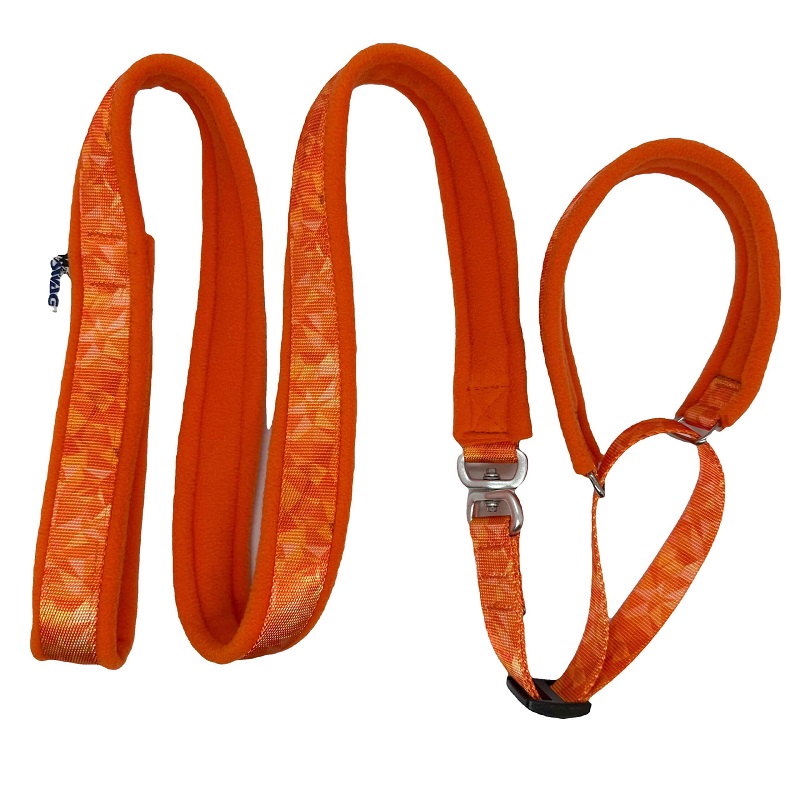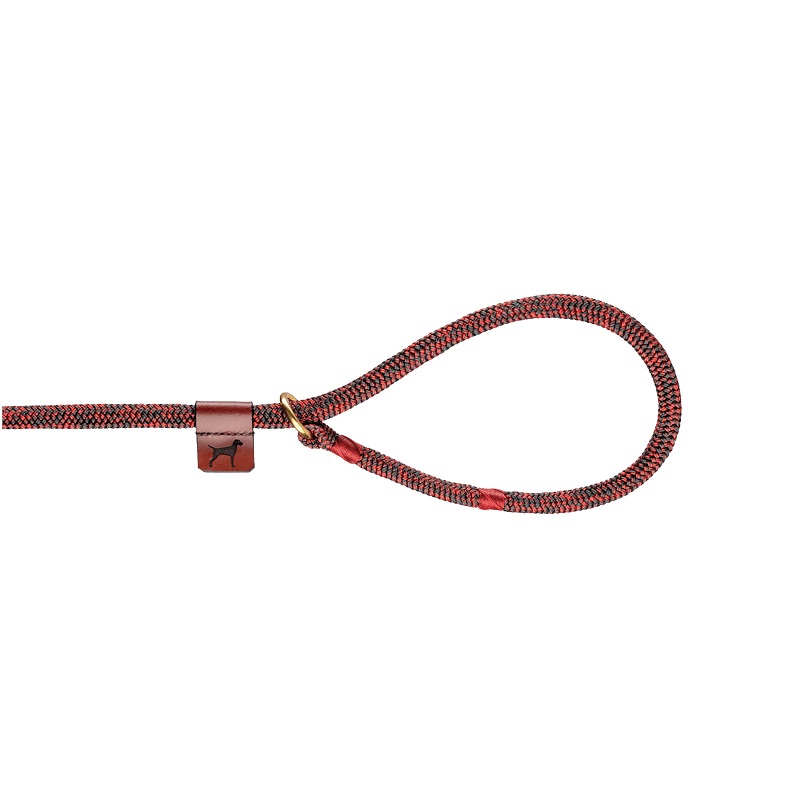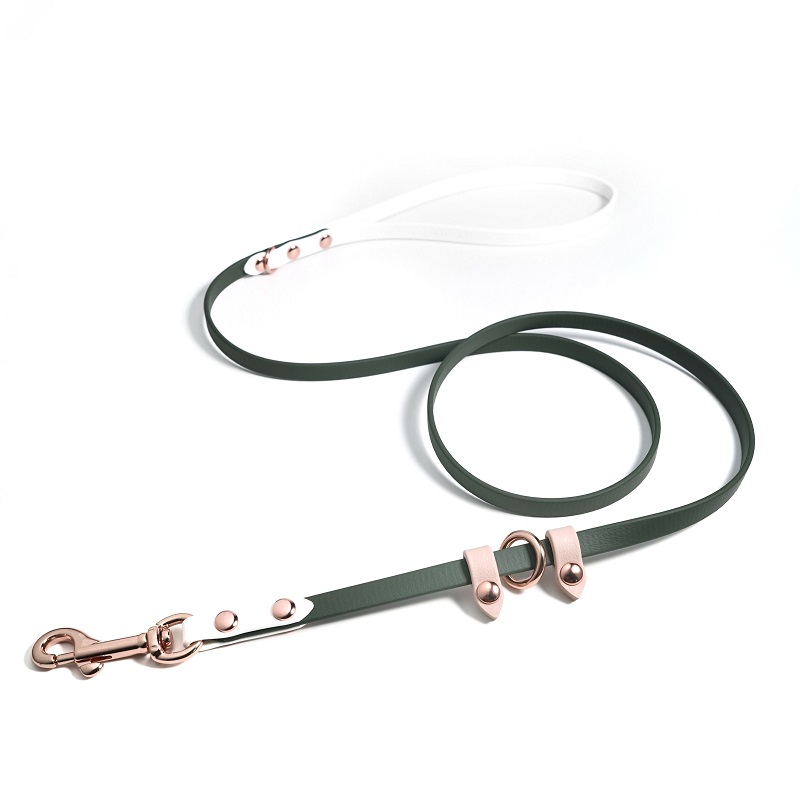Walking your dog is not only a vital aspect of their daily routine but also a great way to bond with your furry friend. Among the many tools available for dog walking, slip leashes—also known as slip leads—have gained popularity. However, they come with both advantages and disadvantages that every dog owner should consider. This article explores the effectiveness, safety, and overall suitability of slip leashes for dog walking.
What Are Slip Leashes?
Definition and Structure
Slip leashes are simple yet effective tools designed for dog walking. They consist of a single piece of material, typically made from nylon or leather, which forms a loop at one end that tightens around the dog’s neck when pulled. The other end often features a handle for the owner to grip. This design allows for quick adjustments in length and tension, making it easy to manage your dog without needing additional clips or buckles.
Common Uses
Slip leashes are commonly used by trainers, shelters, and veterinary professionals. Their simplicity makes them an excellent choice for quickly leashing dogs, especially in situations where time is of the essence, such as when moving dogs in and out of vehicles or kennels. They can be particularly effective for controlling strong or excitable dogs during walks or training sessions, as they provide immediate feedback to the dog without complicated fastening mechanisms.

Advantages of Slip Leashes
Ease of Use
One of the primary benefits of slip leashes is their simplicity. Unlike traditional collars and leashes that require multiple steps to secure, slip leashes can be put on and taken off in seconds. This ease of use can be especially beneficial for busy dog owners or those who may struggle with more complex leash systems. Additionally, since they are adjustable, they can accommodate dogs of varying sizes without the need for different leash lengths.
Immediate Feedback
Slip leashes provide immediate feedback to the dog, allowing for quick corrections during walks. When a dog pulls or tugs, the slip lead tightens slightly, signaling to the dog to stop or slow down. This characteristic can be particularly useful for training purposes, helping to reinforce good behavior without the need for harsh corrections. Many professional trainers advocate for using slip leashes to teach dogs proper leash manners, as they promote a clear line of communication between the owner and the dog.
Disadvantages of Slip Leashes
Potential for Injury
While slip leashes offer several advantages, they also carry risks. One of the most significant concerns is the potential for injury. If not used correctly, a slip leash can tighten too much around the dog’s neck, leading to choking or injury. This risk is especially present for dogs that are prone to pulling or lunging, as the sudden force can cause significant strain on their neck and throat. It’s crucial for dog owners to understand how to apply the right amount of pressure and to monitor their dog closely while using this type of leash.
Lack of Control
Another drawback of slip leashes is the limited control they offer, especially for larger or more powerful dogs. While the slip lead can provide some feedback, it may not give enough control for dogs that are strong pullers. In situations where immediate control is necessary, such as encountering other dogs or pedestrians, a standard collar and leash combination may prove to be more effective. Owners must weigh their dog’s behavior and strength against the benefits of using a slip leash.

Best Practices for Using Slip Leashes
Proper Fitting and Adjustment
When using a slip leash, it’s essential to ensure that it fits correctly. The loop should be snug enough to stay in place but not so tight that it causes discomfort. Ideally, the leash should rest high on the dog’s neck, just behind the ears, to prevent injury. Owners should regularly check the fit, especially if the dog is still growing or if they have recently lost or gained weight. Adjusting the leash appropriately can help maximize its effectiveness while minimizing potential risks.
Training and Socialization
Before using a slip leash for regular walks, it’s advisable to train your dog to respond properly to the feedback it provides. Positive reinforcement techniques can help establish good walking habits while using a slip lead. Gradual exposure to various environments—such as parks, busy streets, or crowded areas—can also help your dog become accustomed to the leash and improve their behavior during walks. Socialization is crucial for ensuring that your dog remains calm and well-behaved regardless of external distractions.
Alternatives to Slip Leashes
Traditional Collars and Leashes
For many dog owners, traditional collars and leashes are the go-to choice for walking. These setups offer more control and can be more comfortable for the dog, especially during long walks. Many collars are designed with padding or cushioning to prevent chafing, and they come with various clip options to ensure a secure fit. While traditional leashes may lack the immediate feedback mechanism of slip leashes, they can still be effective for teaching proper walking etiquette through consistent training.
Harnesses
Harnesses have become increasingly popular as an alternative to slip leashes, especially for dogs prone to pulling. Unlike slip leashes and traditional collars, harnesses distribute pressure across the dog’s chest rather than their neck, reducing the risk of injury. There are various styles of harnesses available, from simple designs to more complex ones that include additional features like front-clip attachments to discourage pulling. This makes harnesses an excellent option for dogs that require more control and comfort during walks.
Understanding Your Dog’s Behavior
Assessing Your Dog’s Needs
Every dog is unique, and understanding their behavior is crucial when selecting a walking tool. Assess your dog’s temperament, energy level, and walking style before deciding on a slip leash or an alternative. High-energy dogs may benefit more from a harness, while those with calmer dispositions might adapt well to a slip leash. Observing how your dog reacts during walks can provide valuable insight into their needs and preferences.
Recognizing Signs of Stress
It’s essential to be attentive to your dog’s body language while using a slip leash. Signs of stress, such as excessive panting, whining, or attempts to escape, may indicate that the slip lead is causing discomfort. If your dog appears anxious or fearful, it may be time to reconsider your choice of leash. A positive walking experience is paramount, and being attuned to your dog’s needs will help foster a more enjoyable outing for both of you.

The Role of Training in Successful Leash Walking
Importance of Professional Guidance
Whether you choose a slip leash or another walking tool, professional training can significantly enhance the walking experience. Professional dog trainers can provide valuable guidance on leash management techniques, ensuring that you and your dog communicate effectively. They can also help you develop a training plan tailored to your dog’s specific needs, taking into account their behavior, energy levels, and any previous training experiences.
Consistency and Patience
Training a dog to walk correctly on a leash requires consistency and patience. Regardless of the type of leash you use, establishing a routine and sticking to it is vital for success. Regular practice sessions, along with positive reinforcement, will help your dog learn to associate walking on a leash with enjoyable experiences. Patience is key; progress may take time, but the rewards of a well-trained dog are well worth the effort.
Long-Distance Walking and Slip Leashes
Considerations for Longer Walks
If you plan on going for longer walks, slip leashes may not always be the best option. Extended use can lead to fatigue or discomfort for both the dog and the handler. Additionally, the potential for injury increases with longer durations, as the repeated tightening around the neck can cause strain. For longer outings, consider using a harness or a padded collar that offers greater comfort and control over extended periods.
Hydration and Breaks
During long walks, it’s essential to keep your dog hydrated and take breaks as needed. Regardless of which type of leash you choose, plan ahead by bringing water and finding shade or resting spots during your journey. Frequent breaks will help ensure that both you and your dog remain comfortable and energized throughout the walk, promoting a positive experience that encourages future outings.
Final Thoughts on Slip Leashes
Weighing the Pros and Cons
In conclusion, slip leashes can be a practical choice for dog walking under certain conditions. Their ease of use and ability to provide immediate feedback make them appealing options for many dog owners. However, potential risks, such as injury and limited control, cannot be overlooked. It’s essential to weigh the pros and cons based on your dog’s behavior, size, and walking habits.
Making an Informed Decision
Ultimately, the decision to use a slip leash or opt for an alternative should be informed by your dog’s individual needs and your own comfort level. By considering all the factors discussed in this article, you can make a thoughtful choice that enhances your walking experience. Remember, the goal is to ensure a safe, enjoyable outing for both you and your furry companion, prioritizing their well-being and happiness above all else.










